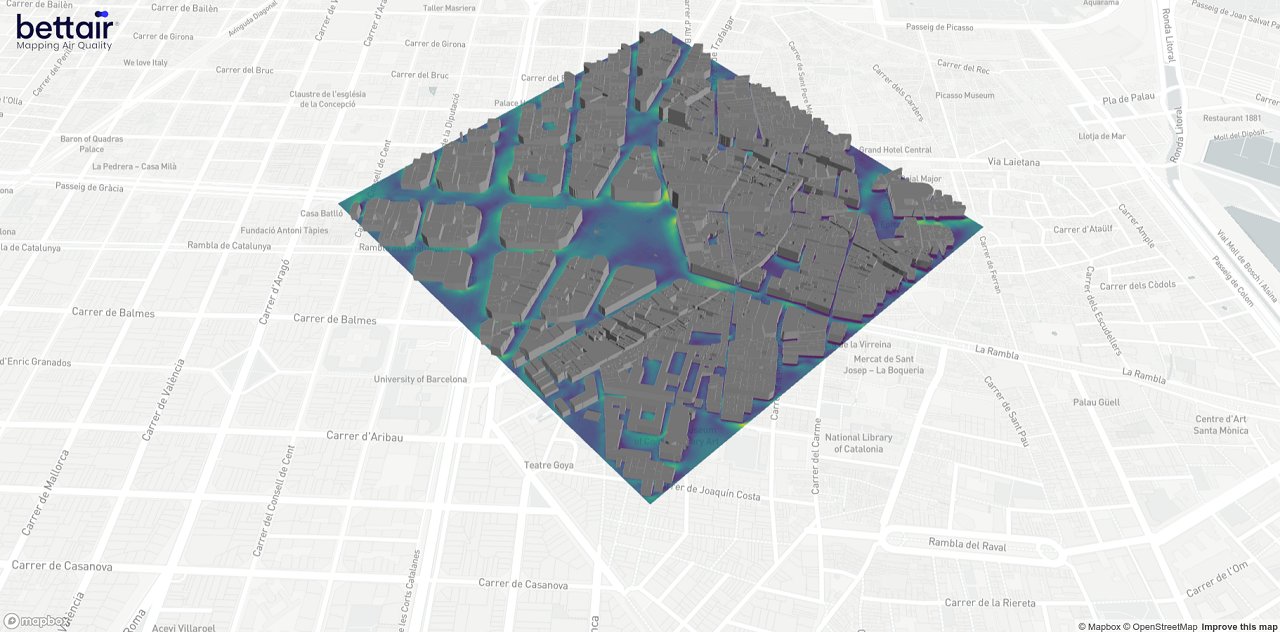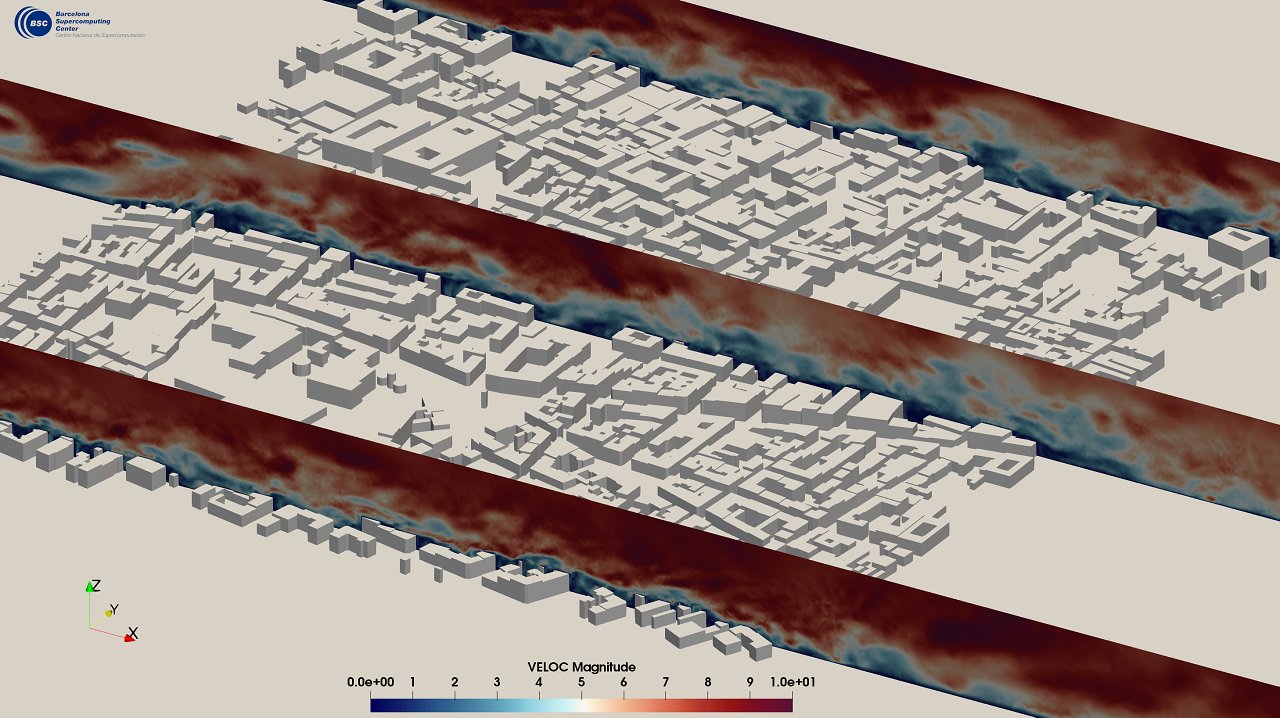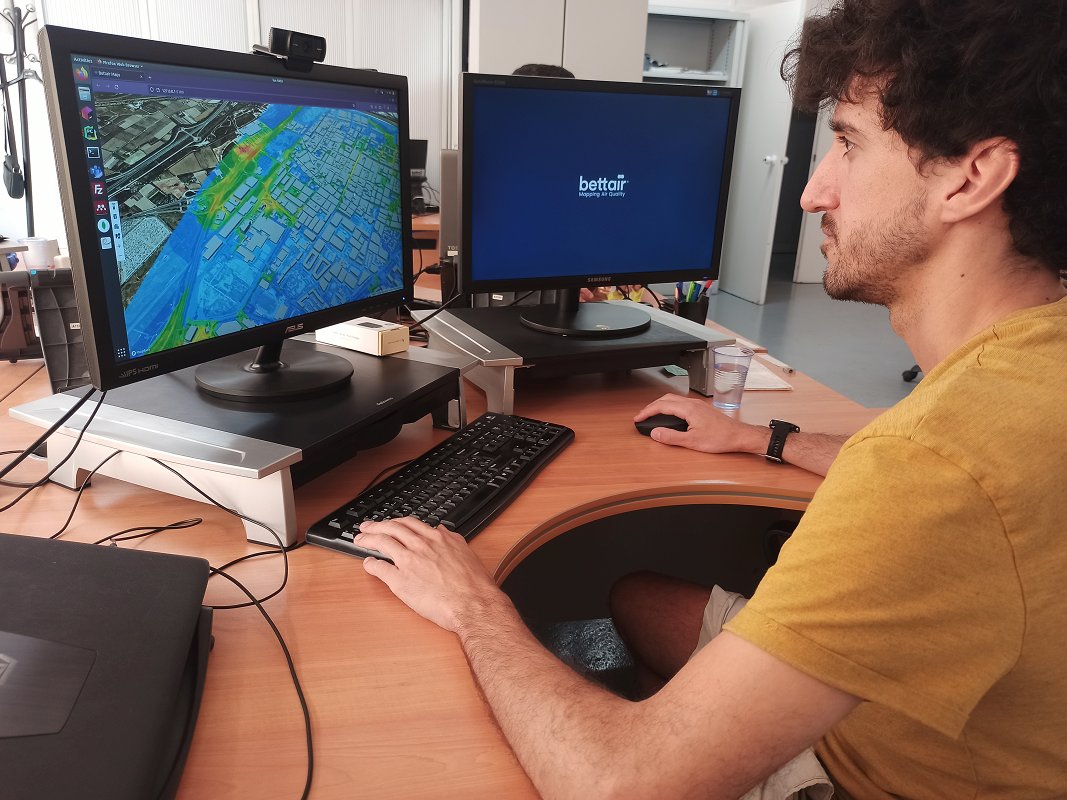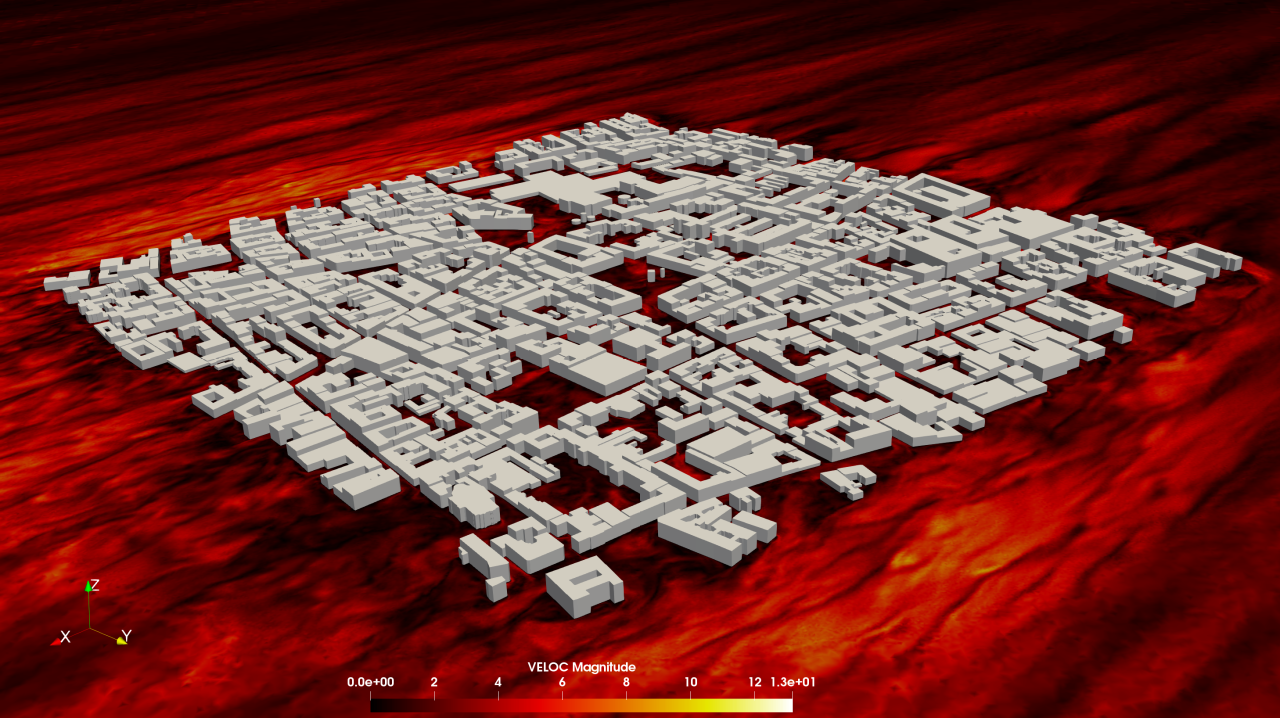AI-Aided Wind Flow and Gas Dispersion Simulations in Cities
Nowadays, the distribution of pollutants at street and urban level is not completely understood because the sources of the emissions of the gas concentrations may change fast at a given location and between nearby sites. In this context, HPC and Computational Fluid Dynamics (CFD) are key tools for tracking the dispersion of pollutants with high resolution. The goal of this experiment is to train Generative Adversarial Networks that mimic the output of HPC-CFD simulations at an affordable cost and to add them to Bettair’s map generation pipeline.
SECTOR: Environmental
TECHNOLOGY USED: CFD Simulations
COUNTRY: Spain
The challenge
Air pollution is the single largest environmental health risk in Europe and a major cause of premature death and disease. Thanks to the advances in research on the human health impacts of air pollution now reflected in the new 2021 WHO Air Quality Guidelines, we know that adverse effects begin at much lower concentrations than previously assumed.
Urban air quality is influenced by complex atmospheric dynamics, urban geometry, land use, and traffic patterns, leading to very different pollutant distributions at microscales. Some air pollution is windblown from outside the city, but most urban air quality problems are hyper-local, i.e. at street level and within meters of their source. As a consequence, any high-accuracy air quality map needs to use either a very dense network of sensors that measures pollution in real-time (which is very expensive) and/or high computational resources to process the data and model the distribution of pollutants with high spatial and temporal resolution.
The goal of this experiment was to reduce the computational cost of air quality simulations in urban environments and to give Bettair Cities access to affordable and accurate state-of-the-art real-time air quality modelling tools.
The solution
Using 30 3D models of 1km2 areas of real urban geometries from European capitals as a basis, a dataset of approximately 30,000 256m by 256m areas was built. These urban geometries were then used to perform CFD simulations of the wind flow for three different wind directions and the pollutant dispersion generated by traffic with a high spatial resolution.
Deep Neural Networks were then trained to learn the results of these simulations at different heights. Using these AI models, simulations of new urban geometries can now be performed instantaneously with high precision and fewer computational resources. These models have been added to Bettair's platform to provide information about air quality and local emissions in real time.
Business, Social and Environmental Impact
Bettair’s ultimate aim is to help improve the air quality in local communities by providing accurate and actionable information. We want to raise awareness and work together with stakeholders to create policies and push initiatives that improve air quality everywhere. As a result of this experiment, Bettair has created an energy and computationally efficient low-cost AI solution to model air quality in cities with up to 1m2 resolution, in near real-time. This type of precision and resolution is currently out of reach for any competitor due to the computational requirements of the CFD simulations with scientific software. The cost of the service provided by Bettair is up to 95% lower than the competitors with similar spatial resolution and runs in real-time. The expected revenue for this year will be two or three times higher, because of the new service and the turnover for 2023 will increase by – at least – a factor of two.
Thanks to this experiment, Bettair is able to combine sensor measurements with AI simulations and extract precise information about the local emissions and pollutant concentrations in the cities. This information is then made available in Bettair’s platform and enables individuals and communities to take collective actions to improve air quality for everyone. These solutions are already being tested in big cities like Rome or smaller cities like El Prat de Llobregat (population of 65,000) in Barcelona.
Benefits
- The simulation cost per km2 is reduced from €1,850 to less than €1.
- The spatial resolution of the real-time modeling capabilities is enhanced from 100 m2 to 1 m2.
- The experimental setup time for new cities is reduced by 80% from 3 weeks to 4 days.
- Access to new markets Bettair Cities: municipalities and regional governments that could not afford classical modeling before.
- Bettair’s expected turnover for 2023 will increase by a factor of at least two.
Organisations involved:
End User: BETTAIR CITIES SL
HPC Provider: Barcelona Supercomputing Center
Partner Barcelona Supercomputing Center - BSC is part of the NCC Spain.
BETTAIR Success Story won HPC Innovation Excellence Award 2022.





